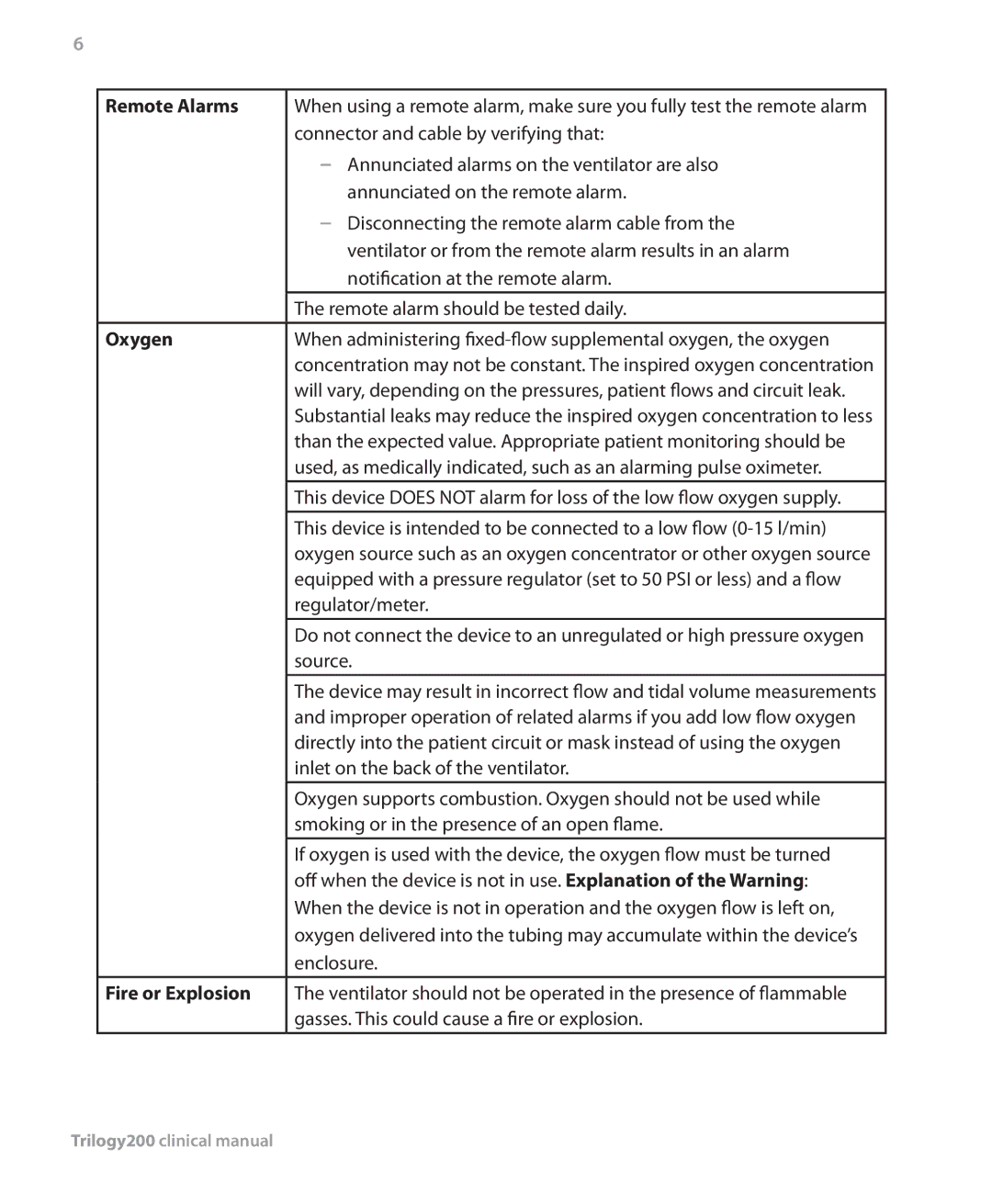6
Remote Alarms | When using a remote alarm, make sure you fully test the remote alarm |
| connector and cable by verifying that: |
| |
| annunciated on the remote alarm. |
| |
| ventilator or from the remote alarm results in an alarm |
| notification at the remote alarm. |
| The remote alarm should be tested daily. |
Oxygen | When administering |
| concentration may not be constant. The inspired oxygen concentration |
| will vary, depending on the pressures, patient flows and circuit leak. |
| Substantial leaks may reduce the inspired oxygen concentration to less |
| than the expected value. Appropriate patient monitoring should be |
| used, as medically indicated, such as an alarming pulse oximeter. |
| This device DOES NOT alarm for loss of the low flow oxygen supply. |
| This device is intended to be connected to a low flow |
| oxygen source such as an oxygen concentrator or other oxygen source |
| equipped with a pressure regulator (set to 50 PSI or less) and a flow |
| regulator/meter. |
| Do not connect the device to an unregulated or high pressure oxygen |
| source. |
| The device may result in incorrect flow and tidal volume measurements |
| and improper operation of related alarms if you add low flow oxygen |
| directly into the patient circuit or mask instead of using the oxygen |
| inlet on the back of the ventilator. |
| Oxygen supports combustion. Oxygen should not be used while |
| smoking or in the presence of an open flame. |
| If oxygen is used with the device, the oxygen flow must be turned |
| off when the device is not in use.Explanation of the Warning: |
| When the device is not in operation and the oxygen flow is left on, |
| oxygen delivered into the tubing may accumulate within the device’s |
| enclosure. |
Fire or Explosion | The ventilator should not be operated in the presence of flammable |
| gasses. This could cause a fire or explosion. |
Trilogy200 clinical manual
